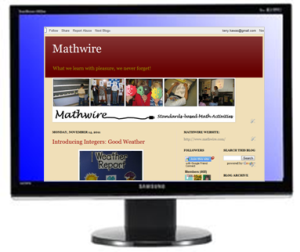Introducing Integers
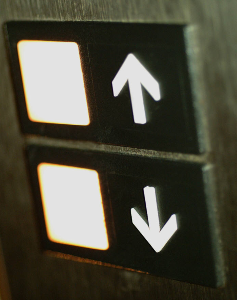
|
Integers: Elevator ModelStudents might also use this model to describe riding up and down in an elevator. This real-life application is one some students might have encountered if they live in a large city or have visited taller buildings. Generally problems involve starting at one floor and going up (+) or going down (-) floors to get to another location within the building. This provides a gentle introduction to integers in a familiar format. Some teachers create a fictional store with special floors (e.g. 2 - Kids' Clothing, 3 - Furniture, 4 - Toys, etc.) so that students experience this real-life application of integers. It's easy to generate integer problems using this model: If I get back on the elevator at the 2nd floor, ride up 5 floors, then back down 1, what floor am I on now? Challenge students to write their own Where in the Building Am I Now? problems for classmates to solve. These student-generated problems require higher-order thinking skills and students truly enjoy solving problems created by their peers. |
Using the Elevator Model The The |
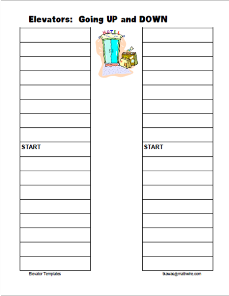
Elevator Template |
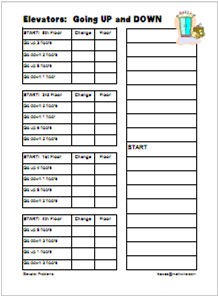
Elevator Problems |
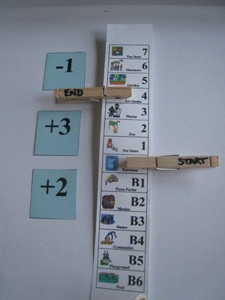
|
Store ElevatorStudents enjoy this fantasy store with a zoo, pool and games -- everything a kid could want to fill their day while their mom shops. This is an intuitive model for students as many students have ridden elevators up and down in hotels, airports, shopping malls, office buildings, etc. Reinforce the notion that up is a positive move and down is a negative move. Create the fantasy store based on your students and their interests. Use two clothespins marked Start and End so that students can work through the problems step by step. Create a deck of cards with both positive (up) and negative (down) moves so that students can play independently. It's easy to generate integer problems using this model: If I get back on the elevator at the 2nd floor, ride up 5 floors, then back down 1, what floor am I on now? Challenge students to write their own Where in the Building Am I Now? problems for classmates to solve. These student-generated problems require higher-order thinking skills and students truly enjoy solving problems created by their peers. |
Additional Internet ResourcesNCTM's Illumination site offers a unit entitled |
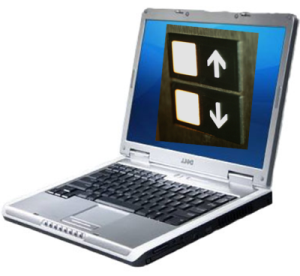
|


